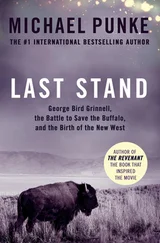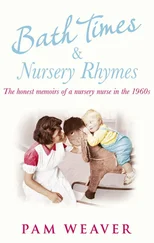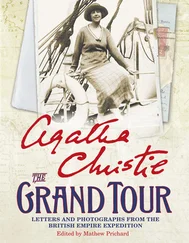Nelson Johnson - Boardwalk Empire - The Birth, High Times, and Corruption of Atlantic City
Здесь есть возможность читать онлайн «Nelson Johnson - Boardwalk Empire - The Birth, High Times, and Corruption of Atlantic City» весь текст электронной книги совершенно бесплатно (целиком полную версию без сокращений). В некоторых случаях можно слушать аудио, скачать через торрент в формате fb2 и присутствует краткое содержание. Жанр: Старинная литература, на английском языке. Описание произведения, (предисловие) а так же отзывы посетителей доступны на портале библиотеки ЛибКат.
- Название:Boardwalk Empire: The Birth, High Times, and Corruption of Atlantic City
- Автор:
- Жанр:
- Год:неизвестен
- ISBN:нет данных
- Рейтинг книги:5 / 5. Голосов: 1
-
Избранное:Добавить в избранное
- Отзывы:
-
Ваша оценка:
- 100
- 1
- 2
- 3
- 4
- 5
Boardwalk Empire: The Birth, High Times, and Corruption of Atlantic City: краткое содержание, описание и аннотация
Предлагаем к чтению аннотацию, описание, краткое содержание или предисловие (зависит от того, что написал сам автор книги «Boardwalk Empire: The Birth, High Times, and Corruption of Atlantic City»). Если вы не нашли необходимую информацию о книге — напишите в комментариях, мы постараемся отыскать её.
Boardwalk Empire: The Birth, High Times, and Corruption of Atlantic City — читать онлайн бесплатно полную книгу (весь текст) целиком
Ниже представлен текст книги, разбитый по страницам. Система сохранения места последней прочитанной страницы, позволяет с удобством читать онлайн бесплатно книгу «Boardwalk Empire: The Birth, High Times, and Corruption of Atlantic City», без необходимости каждый раз заново искать на чём Вы остановились. Поставьте закладку, и сможете в любой момент перейти на страницу, на которой закончили чтение.
Интервал:
Закладка:
The businesses along the Boardwalk helped to foster an emphasis on buying and selling that would pervade the Atlantic City scene for years to come. Every foot of this grand promenade was dedicated to assisting its strollers to part with their money. If the people walking on the Boardwalk weren’t gazing at the ocean, they were certain to be looking at something for sale. The Boardwalk merchants understood their customers and did everything they could to divert their attention from the surf. The industrialization and urbanization of America were, for the first time, creating expendable income for the masses. Atlantic City played a significant role in fostering the illusion that the route to happiness was by way of materialism. The Boardwalk merchants appealed to the impulse to consume and convinced their patrons they couldn’t have a fun time at the shore unless they purchased some of their goodies. Through the commercialization of the Boardwalk, recreational buying came into vogue. The spending of money as a sort of pleasure was introduced to the working class and became part of popular American culture.
More than conveniences for their strollers, the Boardwalk’s shops became a medium of entertainment and a chance to fulfill the American dream, if only temporarily. Hundreds of small stores and kiosk-like structures were constructed in front of the hotels on the city side of the Boardwalk. While there were more refined shops featuring expensive jewelry and furnishings in the hotels, their numbers were few. There were many more stores along the Boardwalk making sales from nickels and dimes selling trinkets. With the grand hotels as a backdrop, these small stores offered visitors, most of whom could never afford a stay in the hotels, the opportunity to purchase gifts and mementos so they could take home a taste of the high life.
There was no limit to the wonderful junk Boardwalk merchants offered for sale: postcards with sexual innuendoes, paintings on shells, tinsel jewelry, handmade Native American moccasins, kewpie dolls, Bohemian cut glass, and an endless inventory of nonsense that the visitor would never buy any place else except when vacationing in Atlantic City. In addition, the Boardwalk merchants pioneered walk-away eateries offering an incredible array of food and beverages. There was everything from deviled crabs, tutti-frutti, saltwater taffy, caramel popcorn, and pretzels to all the “Natural Saratoga Water” you could drink for five cents.
The Boardwalk became Main Street, Fantasy Island. It was a wonderland of glitz and cheap thrills. “The Boardwalk was a stage, upon which there was a temporary suspension of disbelief; behavior that was exaggerated, even ridiculous, in every day life was expected at the resort.” By the beginning of the 20th century, the resort attracted the attention of the New Baedeker , a publication for the sophisticated traveler, which remarked, “Atlantic City is an eighth wonder of the world. It is overwhelming in its crudeness—barbaric, hideous, and magnificent. There is something colossal about its vulgarity.”
Atlantic City’s grand promenade created for its strollers an illusion of social mobility that couldn’t be found at other resorts. Elias Howe’s invention of the sewing machine in 1846 laid the foundation for the ready-to-wear clothing industry. Its widespread use in the last half of the 19th century produced a fashion revolution in America. The working class could now afford stylish garments. Ready-made clothing blurred class lines and for many of the resort’s patrons, the Boardwalk became a showcase for their new clothes. A trip to Atlantic City was an excuse for getting dressed up. Strolling on the Boardwalk made visitors feel they were marchers in a grand fashion parade. The working class craved opportunities to participate in festive occasions and the Boardwalk gave them just such a chance. During the summer months, the resort became a huge masquerade party, with everyone trying to appear as if they had arrived socially. At the same time the resort was growing in popularity, American society was groping toward a popular culture to suit the new industrial world. The average worker wanted to be free of the limits imposed by farm life and small villages. Atlantic City was an outlet for that urge. The Boardwalk created the illusion that everyone was part of a huge middle class parading to prosperity and social freedom. There were no class distinctions while strolling the Boardwalk; everyone was someone special.
For visitors to the Boardwalk, the glorification of the common man reached its peak with the rolling chair. The rolling chair was first introduced to the Boardwalk in 1887 by William Hayday, a hardware store merchant, as a part of Atlantic City’s role as a health resort. Invalids could hire a chair and enjoy the pleasures of the view of the surf, the salt air, and the wares for sale in the Boardwalk’s many shops. Harry Shill, a wheelchair manufacturer, was so impressed that he began producing rolling chairs in mass. They quickly evolved from an aid for invalids into a means for transporting every visitor from a working stiff into royalty, even if it was only for a short while. What better way to stroke the ego of the working-class visitor than to wheel him around in a beautifully decorated vehicle, thickly padded with comfortable cushions, and driven by an obliging servant? They couldn’t get that kind of treatment back home, making the Boardwalk something special in their memories.
The Boardwalk brought resort patrons to the water’s edge, but the five amusement piers built on the ocean side lured them farther, overtop the ocean itself. The excitement at the very thought of it was more than most visitors could resist and they spent their money on any attraction offered on the piers. The first three piers that were built didn’t last beyond a single summer; winter storms destroyed them all. John Applegate, a Boardwalk photographer, built a sturdier one in 1884, a 670-foot-long pier consisting of an upper and lower deck, with an amusement pavilion at the outer end. Applegate’s pier was a profitable investment for its owner but it was small time compared to the success had by John Young, who purchased it in 1891.
John Young understood what Atlantic City was all about. Born across the bay in Absecon Village to an oyster man, he was fatherless at the age of three. He left school early for work to support himself. While working as a carpenter doing repair work on the Boardwalk, he met Stewart McShea, a Pennsylvania baker. McShea had money and Young had ideas. Together, they opened a roller-skating rink and a carousel, both of which were successful. When Applegate’s pier went up for sale they grabbed it, with Young in charge of the show.
Young extended Applegate’s pier to a length of 2,000 feet, then searched the world over for attractions to lure the masses. His pier was a glittering palace: It contained the “world’s largest ballroom,” a hippodrome, an exhibit hall with everything from butterflies to mutants, a reproduction of a Greek temple, and an aquarium where he kept special finds from his daily fish hauls. Young held dances, promoted contests, gave away prizes, featured exhibitions, and sponsored productions of both contemporary and classical plays in Young’s Pier Playhouse. He even brought Sarah Bernhardt to his pier to star in a performance of “Camile.” The Captain had something for everybody.
The pier Young bought from Applegate was destroyed by fire in 1902. Young bought out McShea and rebuilt in time for the next summer, calling his new pier “Young’s Million Dollar Pier.” His pier was a tinsel palace that dazzled Boardwalk strollers. Highlighted by gobs of gaudy Victorian gingerbread, it housed attractions designed to lure a wide cross-section of patrons. It worked like a charm. At the height of his success, Young was reaping an annual income of more than a million dollars, and all before the income tax.
Читать дальшеИнтервал:
Закладка:
Похожие книги на «Boardwalk Empire: The Birth, High Times, and Corruption of Atlantic City»
Представляем Вашему вниманию похожие книги на «Boardwalk Empire: The Birth, High Times, and Corruption of Atlantic City» списком для выбора. Мы отобрали схожую по названию и смыслу литературу в надежде предоставить читателям больше вариантов отыскать новые, интересные, ещё непрочитанные произведения.
Обсуждение, отзывы о книге «Boardwalk Empire: The Birth, High Times, and Corruption of Atlantic City» и просто собственные мнения читателей. Оставьте ваши комментарии, напишите, что Вы думаете о произведении, его смысле или главных героях. Укажите что конкретно понравилось, а что нет, и почему Вы так считаете.












